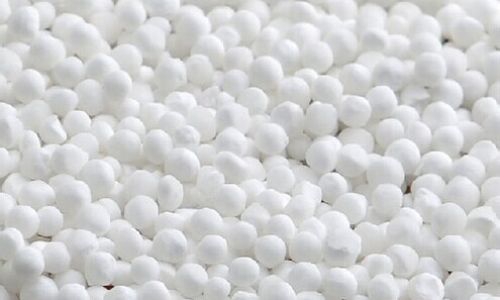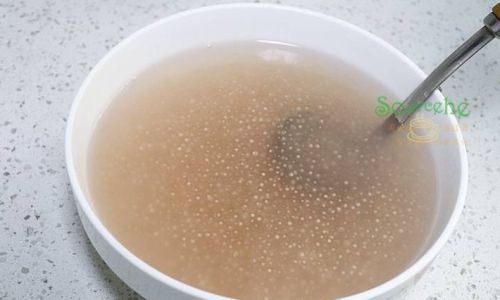Table of content
- Step 1: Drain and Rinse
- Step 2: Toss with a Bit of Sugar or Syrup
- Step 3: Store in an Airtight Container
- Step 4: Refrigerate
- Shelf Life and Reheating
- Step 1: Drain and Rinse
- Step 2: Toss with a Bit of Sugar or Syrup
- Step 3: Flash Freeze
- Step 4: Transfer to Freezer Bags
- Shelf Life and Reheating
- Commercial Solutions
- Homemade Preservation Mixture
- Step 1: Prepare the Tapioca Pearls
- Step 2: Vacuum Seal
- Step 3: Store
- Reheating Vacuum-Sealed Tapioca Pearls
Introduction
Tapioca pearls, also known as sago pearls, are a staple ingredient in numerous desserts, particularly in Asian cuisines. They add a delightful chewy texture to dishes like bubble tea, tapioca pudding, and various sweet soups. While freshly cooked tapioca pearls offer the best texture and flavor, sometimes it’s necessary to prepare them in advance or store leftovers. Proper preservation techniques are crucial to ensure that your cooked tapioca pearls retain their texture, taste, and overall quality. This guide will delve into various methods for preserving cooked tapioca pearls, offering practical advice and tips to help you keep them fresh for extended periods.
Understanding Tapioca Pearls
Before discussing preservation methods, it’s essential to understand what tapioca pearls are and how they are made. Tapioca pearls are derived from the cassava root, which is processed into a starch. This starch is then formed into small, pearl-like balls that, when cooked, become translucent and chewy.
The cooking process involves boiling the tapioca pearls in water until they become translucent and fully cooked. This can take anywhere from 10 to 30 minutes, depending on the size of the pearls. Once cooked, they should be rinsed with cold water to stop the cooking process and prevent them from becoming overly soft or sticky.
Importance of Proper Preservation
Improper storage of cooked tapioca pearls can lead to several issues, including:

- Texture Degradation: Over time, stored tapioca pearls can lose their chewy texture and become mushy or hard.
- Flavor Loss: Freshness is key to maintaining the delicate sweetness and flavor of cooked tapioca.
- Microbial Growth: Poor storage conditions can lead to the growth of bacteria, mold, or other microorganisms, posing a health risk.
Therefore, it’s imperative to use effective preservation techniques to extend the shelf life and maintain the quality of your cooked tapioca pearls.
Refrigeration Method
One of the most common and effective methods for preserving cooked tapioca pearls is refrigeration. Here’s a step-by-step guide:
Step 1: Drain and Rinse
After cooking, drain the tapioca pearls thoroughly using a colander. Rinse them with cold water to stop the cooking process and remove any excess starch, which can cause them to stick together.
Step 2: Toss with a Bit of Sugar or Syrup
To prevent the tapioca pearls from sticking to each other, toss them lightly with a small amount of sugar, honey, or a simple syrup. This will create a light coating that acts as a natural preservative and keeps the pearls separate.
Step 3: Store in an Airtight Container
Transfer the tapioca pearls to an airtight container. Make sure the container is clean and dry to avoid any contamination.
Step 4: Refrigerate
Place the container in the refrigerator. The ideal temperature for storing cooked tapioca pearls is between 32°F and 40°F (0°C to 4.4°C).
Shelf Life and Reheating
Refrigerated tapioca pearls can be stored for up to 3 days. When ready to use, reheat them gently in a microwave or on the stovetop. Avoid overheating, as this can cause the pearls to become overly soft and lose their texture.
Freezing Method
For longer-term storage, freezing cooked tapioca pearls is an excellent option. Here’s how to do it:
Step 1: Drain and Rinse
Follow the same steps as for refrigeration: drain the cooked tapioca pearls and rinse them with cold water.
Step 2: Toss with a Bit of Sugar or Syrup
Again, toss the pearls lightly with sugar, honey, or syrup to prevent sticking.
Step 3: Flash Freeze
Spread the tapioca pearls in a single layer on a baking sheet lined with parchment paper. Place the sheet in the freezer for about 1-2 hours, or until the pearls are frozen solid. This step is crucial because it prevents the pearls from clumping together when stored in a freezer bag.
Step 4: Transfer to Freezer Bags
Once the pearls are frozen, transfer them to freezer bags, removing as much air as possible to prevent freezer burn. Label the bags with the date for easy tracking.
Shelf Life and Reheating
Frozen tapioca pearls can be stored for up to 3 months. To use, thaw them overnight in the refrigerator or place the frozen bag in a bowl of cold water. Once thawed, reheat them gently, following the same guidelines as for refrigerated pearls.
Using a Preservation Solution
Another method for preserving cooked tapioca pearls involves using a commercial preservation solution or homemade mixture. These solutions often contain ingredients like sorbitol, glycerin, or a combination of sugars and acids that help maintain the texture and prevent microbial growth.

Commercial Solutions
Several commercial products are specifically designed for preserving cooked tapioca pearls. These solutions typically come with detailed instructions for use. Follow the manufacturer’s guidelines carefully to ensure optimal results.
Homemade Preservation Mixture
If you prefer a homemade solution, you can create a mixture using ingredients like sugar, water, and a small amount of vinegar or lemon juice. The acidity from the vinegar or lemon juice helps to preserve the pearls. Here’s a simple recipe:
-
Ingredients:
- 1 cup sugar
- 1 cup water
- 1 tablespoon vinegar or lemon juice
-
Instructions:
- Dissolve the sugar in water over medium heat.
- Stir in the vinegar or lemon juice.
- Let the mixture cool to room temperature.
- Toss the cooked and rinsed tapioca pearls with the mixture.
- Store in an airtight container in the refrigerator or freezer, following the same guidelines as above.
Vacuum Sealing
Vacuum sealing is another effective method for preserving cooked tapioca pearls, especially if you plan to store them for longer periods. Vacuum sealing removes the oxygen from the packaging, which slows down the oxidation process and extends the shelf life.
Step 1: Prepare the Tapioca Pearls
Cook, drain, rinse, and toss the tapioca pearls with sugar or syrup as usual.
Step 2: Vacuum Seal
Place the prepared tapioca pearls in a vacuum-sealable bag. Use a vacuum sealer to remove the air from the bag and seal it tightly.
Step 3: Store
Store the vacuum-sealed bags in the refrigerator for up to 2 weeks or in the freezer for up to 6 months.
Reheating Vacuum-Sealed Tapioca Pearls
When ready to use, thaw the frozen tapioca pearls if necessary. Reheat them gently, ensuring they don’t overcook. Vacuum-sealed tapioca pearls may take slightly longer to reheat due to the lack of oxygen, so adjust the cooking time accordingly.
Monitoring and Maintenance
Regardless of the preservation method you choose, it’s important to monitor the stored tapioca pearls regularly. Check for signs of mold, discoloration, or off odors, which can indicate spoilage. If any of these signs are present, discard the tapioca pearls immediately to avoid food poisoning.
Additionally, maintain the cleanliness of your storage containers and utensils to prevent cross-contamination. Wash them thoroughly with hot, soapy water before and after use.
Conclusion
Preserving cooked tapioca pearls doesn’t have to be a challenging task. By following the methods outlined in this guide—refrigeration, freezing, using a preservation solution, or vacuum sealing—you can ensure that your tapioca pearls stay fresh, chewy, and delicious for extended periods. Remember to always store them in airtight containers, label them with dates, and monitor them regularly for signs of spoilage. With proper preservation techniques, you can enjoy your favorite tapioca-based desserts anytime you want, without compromising on quality or safety.



0 comments